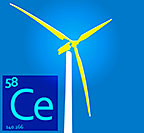Rich Norby, an ecologist at DOE's Oak Ridge National Laboratory, has spent his career exploring how ecosystems respond to atmospheric and climate change, including more than a decade studying the effects of elevated carbon dioxide in a Tennessee sweetgum forest as part of the Free-Air CO2 Enrichment (FACE) project at ORNL.
“When you work with forests, the questions are many decades long,” Norby said.
After the ORNL FACE experiment measurements were completed in 2009, Norby and colleagues integrated the mounds of observational data into computer models.
“We can’t do experiments directly to address all the questions related to global forest response over many decades,” he said. “So we have to make use of models to get at these questions. An important reason for intensive experiments is to inform and improve our models.”
Full Story
Feature
Type Ia supernovae are famous for their consistency. Ironically, new observations suggest that their origins may not be uniform at all. Using a “roadmap” of theoretical calculations and supercomputer simulations, astronomers observed for the first time a flash of light caused by a supernova slamming into a nearby star, allowing them to determine the stellar system from which the supernova was born. This finding confirms one of two competing theories about the birth of Type Ia supernovae. But taken with other observations, the results imply that there could be two distinct populations of these objects. The details of these findings appear May 20 in an advance online issue of Nature.
“By calibrating the relative brightness of Type Ia supernovae to several percent accuracy, astronomers were able to use them to discover the acceleration of the Universe. But if we want to push further and constrain the detailed properties of the dark energy driving acceleration, we need more accurate measurements. If we don’t know where Type Ia supernovae come from, we can’t be totally confident that our cosmological measurements are correct,” says Daniel Kasen, an Associate Professor of Astronomy and Physics at UC Berkeley, who holds a joint appointment at DOE's Lawrence Berkeley National Laboratory (Berkeley Lab).
Full Story
See also…
 You’re probably familiar with the role of DNA as the blueprint for making every protein on the planet and passing genetic information from one generation to the next. But researchers at Brookhaven Lab’s Center for Functional Nanomaterials have shown that the twisted ladder molecule made of complementary matching strands can also perform a number of decidedly non-biological construction jobs: serving as a scaffold and programmable “glue” for linking up nanoparticles. This work has resulted in a variety of nanoparticle assemblies, including composite structures with switchable phases whose optical, magnetic, or other properties might be put to use in dynamic energy-harvesting or responsive optical materials. Three recent studies showcase different strategies for using synthetic strands of this versatile building material to link and arrange different types of nanoparticles in predictable ways.
You’re probably familiar with the role of DNA as the blueprint for making every protein on the planet and passing genetic information from one generation to the next. But researchers at Brookhaven Lab’s Center for Functional Nanomaterials have shown that the twisted ladder molecule made of complementary matching strands can also perform a number of decidedly non-biological construction jobs: serving as a scaffold and programmable “glue” for linking up nanoparticles. This work has resulted in a variety of nanoparticle assemblies, including composite structures with switchable phases whose optical, magnetic, or other properties might be put to use in dynamic energy-harvesting or responsive optical materials. Three recent studies showcase different strategies for using synthetic strands of this versatile building material to link and arrange different types of nanoparticles in predictable ways.  Scientists at DOE's Ames Laboratory have created a new magnetic alloy that may be a lower-cost potential replacement for high-performance permanent magnets found in wind turbines and car engines. The alloy eliminates the use of one of the scarcest and costliest rare earth elements, dysprosium, and instead uses cerium, the most abundant rare earth.
Scientists at DOE's Ames Laboratory have created a new magnetic alloy that may be a lower-cost potential replacement for high-performance permanent magnets found in wind turbines and car engines. The alloy eliminates the use of one of the scarcest and costliest rare earth elements, dysprosium, and instead uses cerium, the most abundant rare earth. Fans of science and science fiction have been warned that mixing matter with anti-matter can yield explosive results. And that’s just what physicists were counting on, in hopes of blowing wide open a puzzle that has confounded them for the last decade.
Fans of science and science fiction have been warned that mixing matter with anti-matter can yield explosive results. And that’s just what physicists were counting on, in hopes of blowing wide open a puzzle that has confounded them for the last decade.  NASA’s Mars Curiosity Rover’s “ChemCam” instrument just got a major capability fix, as Los Alamos National Laboratory scientists uploaded a software repair for the auto-focus system on the instrument.
NASA’s Mars Curiosity Rover’s “ChemCam” instrument just got a major capability fix, as Los Alamos National Laboratory scientists uploaded a software repair for the auto-focus system on the instrument.

